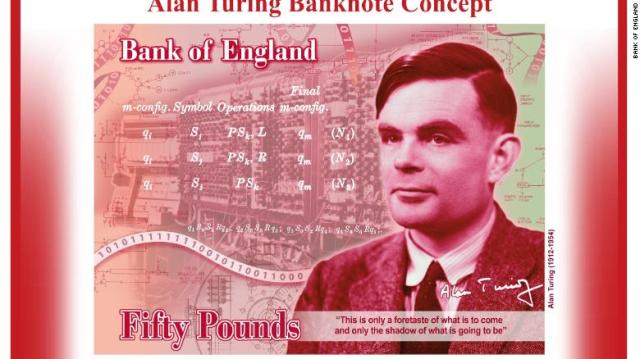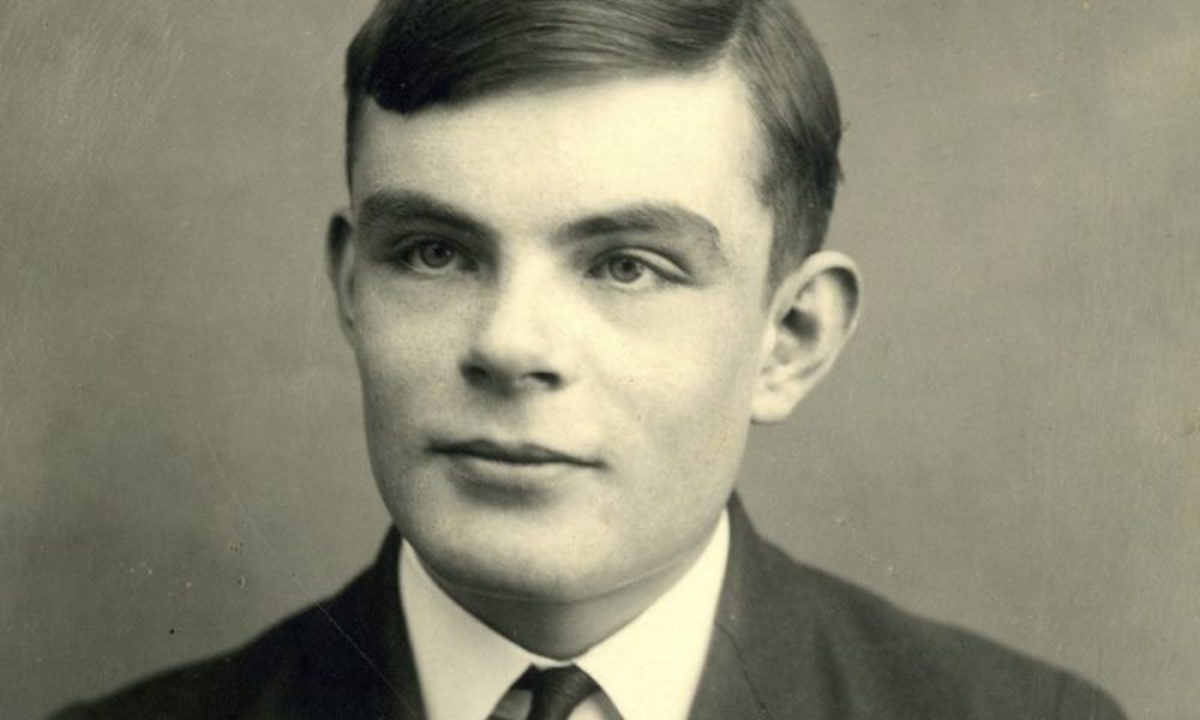The Bank of England announced that Alan Turing, the codebreaker who helped turn the tide of WWII and later fell subject to persecution and chemical castration for his sexuality, will be front and center in wallets across Britain by 2021. Turing, and his work, are set to be featured on the £50 note. Let’s take a look.
Supporters of Turing’s legacy have long lobbied for the pioneering wartime codebreaker—often called the father of computer science—to receive more widespread celebration and recognition. Turing was recently given a proper obituary in the New York Times more than 65 years after his death by apparent suicide. He only received a posthumous apology from the British government in 2009 and a formal pardon from the Queen in 2013.
At least it appears as though the movement to advance Turing’s place in history is gaining real traction. On Monday, the Bank of England’s governor, Mark Carney, said that Turing’s likeness would appear on British currency by 2021. “Alan Turing was an outstanding mathematician whose work has had an enormous impact on how we live today,” Carney said, per the BBC. “As the father of computer science and artificial intelligence, as well as a war hero, Alan Turing’s contributions were far-ranging and path-breaking. Turing is a giant on whose shoulders so many now stand.”
BBC News highlights that this is a significant step forward, culturally speaking—or at least is motivated by intentions to be read as such. “For decades, the idea of Turing being featured on a banknote seemed impossible. This will be seen as an attempt to signal how much has changed in society following the long, ultimately successful campaign to pardon Turing of his 1952 conviction—under contemporary laws—for having a homosexual relationship.”
Here’s the current official “banknote concept” with its focus on Turing and Enigma codebreaking:

As CNN points out, the upcoming, updated £50 note is reflective of Turing’s contributions to Britain and the world of computing, with several “Easter eggs” embedded in the depiction:
The note’s design reflects Turing’s work. It features a ticker tape of binary code that spells out his birthday (June 23, 1912), and depicts the “British Bombe” machine that helped break the Enigma code. It also includes a quote Turing gave to The Times newspaper in 1949: “This is only a foretaste of what is to come, and only the shadow of what is going to be.”
The current £50 note features Queen Elizabeth II on the front (as do all notes) and Scottish inventor James Watt (the 1776 Watt steam engine) and Matthew Boulton (Watt’s business partner) on the back. It would appear that Turing will be replacing Watt and Boulton.
£50 is the highest note denomination in use in Britain. BBC News, in an intriguing aside, writes of the £50 that “the note was once described as the ‘currency of corrupt elites’ and is the least used in daily transactions,” which is unfortunate in this instance. Personally, I might wish Turing’s was a smaller note so that it would be seen and exchanged even more frequently, and I know I’m not alone in wanting to keep one as a souvenir. Fifty pounds is about $62 at the moment, so that’s a lot of money to keep in stasis in a drawer.
Still, I’m thrilled that Turing has gone from being criminalized via bigotry in his home nation to touted on its very currency. This is an honor that is incredibly well-deserved and long overdue. Considering America’s seeming inability to update our money with our country’s true heroes, we’re not ones to talk. Good on you, Bank of England, even if that’s a sentiment I never expected to type.
(via CNN, BBC News, images: The Bank of England, Wikimedia Commons)
Want more stories like this? Become a subscriber and support the site!
—The Mary Sue has a strict comment policy that forbids, but is not limited to, personal insults toward anyone, hate speech, and trolling.—










Published: Jul 16, 2019 03:44 pm